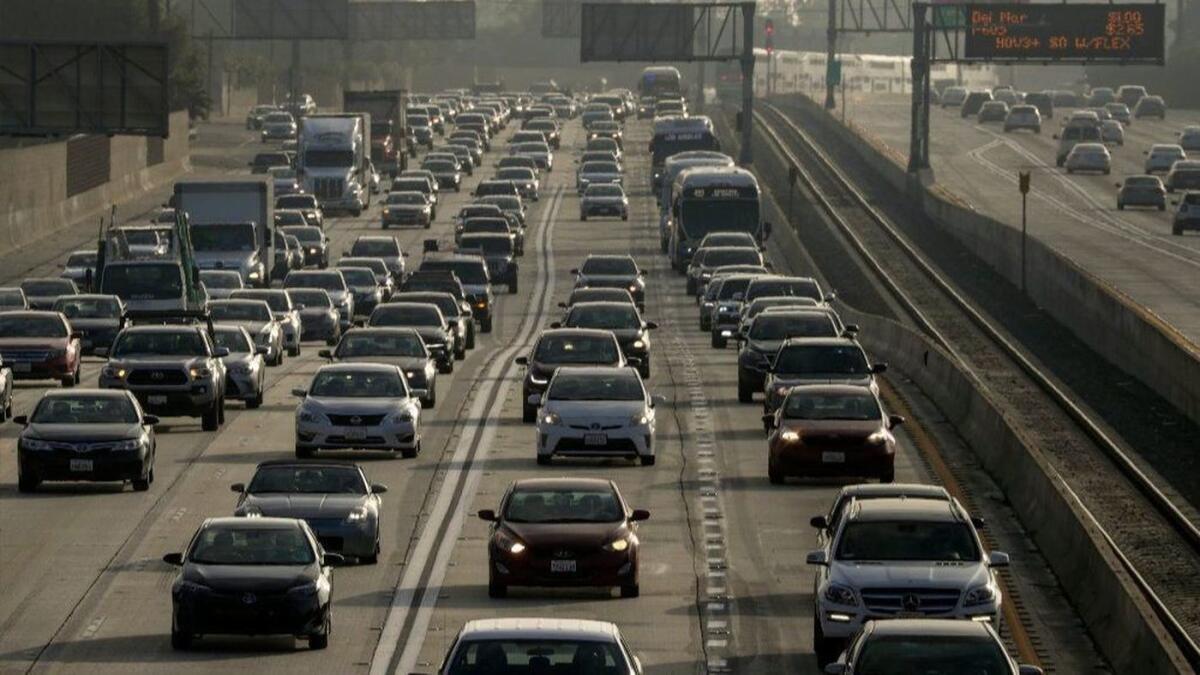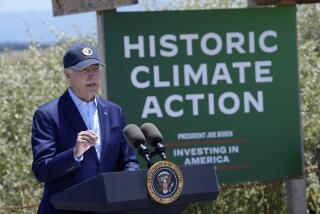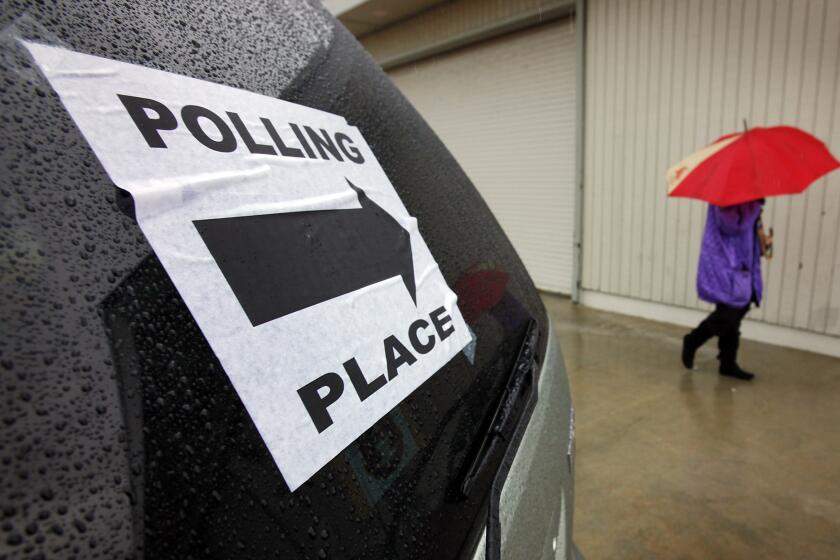On fuel economy plan, Trump administration ignored its own EPA scientists

Reporting from Washington — The Trump administration’s plan to roll back aggressive Obama-era fuel economy standards for cars, pickups and SUVs is built on computer modeling that senior officials at the Environmental Protection Agency had privately warned is flawed and unsupportable, according to newly released agency documents.
The files that emerged Tuesday give a boost to California and other states fighting to keep the administration from watering down the mileage targets, which are crucial to meeting their climate goals. The Obama-era rules, which were championed by California, reflect the most significant action the federal government has taken to slow global warming.
The EPA officials raised multiple red flags in June about the Trump administration’s contention that the higher targets would result in a surge of traffic deaths. The administration ignored its own scientists’ warnings and released its final plan this month. That plan is grounded in several of the assumptions EPA experts cautioned may be indefensible.
In fact, those experts wrote that the Trump administration’s proposal would be “detrimental to safety, rather than beneficial.”
Administration officials said the documents disclosed Tuesday as part of the rule-making process paint an incomplete picture of how the rollback plan was developed.
“These emails are but a fraction of the robust dialogue that occurred during interagency deliberations for the proposed rule,” said a statement emailed from John Konkus, an EPA spokesman. He noted the agency is in the process of collecting public comment on various alternative plans for changing the mileage targets.
But the administration made clear when it unveiled the proposal that its goal is to freeze mileage targets at their 2020 levels for six years, which is the alternative the EPA officials appeared to find least supportable.
Even auto companies, which had sought relief from the Obama rules, are concerned the administration is overreaching. The Trump administration proposal would scrap the federal target of an average of 54 miles per gallon for the vehicles by 2025. Instead, the target would be scaled back to less than 42 miles per gallon.
California is already leading a coalition of 17 states in suing to block the administration plan. Beyond weakening the federal mileage standard, the administration is also planning to revoke the authority California and other states have under the Clean Air Act to continue pursuing the Obama-era targets. The EPA emails that emerged in the rule-making docket Tuesday will be a potent weapon in the legal arsenal of California and the states allied with it.
“As if it isn’t bad enough that the Trump administration’s proposal deals a major blow to American consumers, automakers and equipment manufacturers, and the environment, today we obtained even more evidence that it’s based on bogus science and fundamentally flawed assumptions,” said an email from Sen. Thomas R. Carper (D-Del.), ranking member of the Senate Committee on Environment and Public Works.
“The administration’s own EPA itemized its technical concerns about the plan’s baseless claims, but [the Department of Transportation] and the White House seem to have willfully ignored much of it and chose instead to release a deeply flawed proposed rule that almost certainly will be struck down in court. The facts might be inconvenient for the Trump administration, but this White House cannot simply dismiss the clear science, especially against the advice of its own experts.”
Among those experts was Bill Charmley, the director of assessment and standards at the EPA’s Office of Transportation and Air Quality. He warned the administration against asserting that the fuel efficiency standards would drive up the price of cars so much that consumers would just stay in their older, less safe models.
Charmley’s team found little merit in the argument that lack of access to newer, life-saving technologies would result in an increase of thousands of traffic deaths, according to emails and a report published in the rule-making file. It warned that the administration projections, developed by the Department of Transportation, inexplicably added millions more outdated vehicles to the roads.
The officials also emphasized that the theory that people would opt not to buy new cars is unproven. Some research has found that the fuel savings promised by more efficient vehicles is a big enticement to trade up, even for drivers who are cash-strapped.
Federal studies show the potential savings in fuel costs from the Obama-era rules eclipse the costs those rules add to the sticker prices of cars.
The senior EPA officials had also warned in June that the administration wildly inflated its projections of how many more miles people would drive as more efficient vehicles made driving cheaper. All those extra miles on the road, the administration plan argues, will mean more traffic deaths. But if the estimates in its plan are flawed, as the EPA officials warn, one of the administration’s major justifications for the rollback is called into question.
The skepticism from within the administration’s own ranks emerges in public at an inopportune time for the White House. Amid concerns that a protracted legal battle would hurt the auto industry, creating years of uncertainty for firms and possibly resulting in different parts of the country pursuing different mileage standards, the Trump administration had been hoping to pressure California to compromise. But the state has shown no sign of flinching, and the EPA emails disclosed Tuesday strengthened its case.
The latest look at the Trump administration and the rest of Washington »
More stories from Evan Halper »
[email protected] | Twitter: @evanhalper
More to Read
Get the L.A. Times Politics newsletter
Deeply reported insights into legislation, politics and policy from Sacramento, Washington and beyond. In your inbox three times per week.
You may occasionally receive promotional content from the Los Angeles Times.











